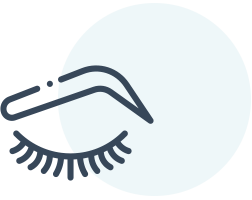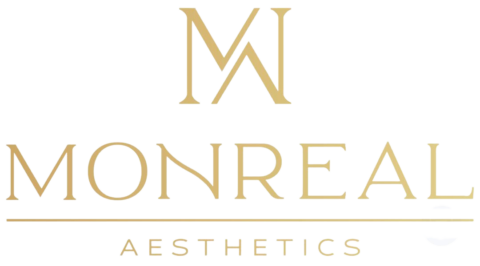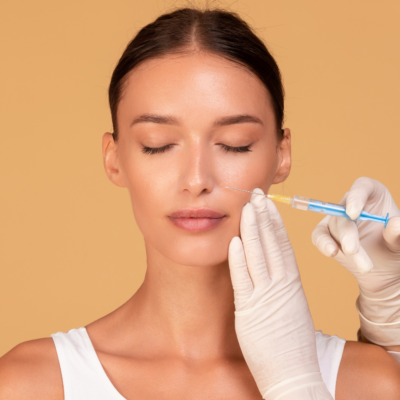Hyaluronic Acid - Grooves
Hyaluronic acid for nasolabial lines or grooves will reduce this aesthetic concern. These deep lines on both sides of the mouth are caused by aging, sun exposure, and other factors.
Hyaluronic acid is a natural compound found in the human body that will help reduce the signs of aging in the nasolabial folds. When you inject hyaluronic acid into your nasolabial folds, it plumps them up so they disappear!

It's in your skin
Our skin cells naturally produce hyaluronic acid, most of which is found in the deeper layers of the dermis.

It's sugar babe
Hyaluronic acid isn't an acid. It's actually a type of sugar called glycosaminoglycan.

It has several names
Depending on its molecular structure, hyaluronic acid can have different properties and receive different names such as: hyaluronan, sodium hyaluronate, or sodium hyaluronate crosspolymer.

Its production is expensive
Hyaluronic acid is expensive to produce, so it is usually priced accordingly.

Hydrate your skin
Hyaluronic acid helps rehydrate skin for a plumper appearance, which then helps minimize the appearance of fine lines and wrinkles.

It can retain water
Hyaluronic acid can hold up to 1,000 times its own weight in water. A 1% concentration of hyaluronic acid can retain 99% of water.
Schedule your hyaluronic acid session for grooves
Schedule your hyaluronic acid session for grooves
Hyaluronic acid is primarily used in beauty treatments because it is an excellent filler for wrinkles and fine lines.
Schedule your assessment
It's time for hyaluronic acid for your grooves
Enjoy the results
Before & After Gallery

Preguntas frecuentes
Not necessarily. Both compounds address similar, but also different, areas of concern. Together, they can work to achieve desired results. Because both are helpful, a consultation is necessary to determine which is best for you.
The choice of which hyaluronic acid is best depends on your treatment goals and varies from person to person. Some of the factors that influence your doctor's response include the injection site, the desired duration, the patient's allergies, and more.
Hyaluronic acid can last between 12 months and 18 months approximately.
No, hyaluronic acid does not migrate to other areas. However, if you have any doubts, it is very important to always have it applied by a medical professional or a specialist like Dr. Gustavo Monsalve at Monreal Aesthetics.
Small aliquots of hyaluronic acid are applied to various locations. The area can be massaged to help contour the filler and adapt it to the specific location. If you experience tenderness with the injections, an ice pack can be used to help relieve pain and swelling.
Hyaluronic acid is safe and effective. The most common reactions may include redness, swelling, bruising, itching, or tenderness. For most patients, these mild reactions resolve within about a week.
- Patients allergic to any of the components of hyaluronic acid.
- Pregnant or breastfeeding patients.
- Patients taking anticoagulants or immunosuppressants.
- Patients with a history of severe scarring or pigmentation disorders.
You should take it easy for 24 hours. You should avoid exercise or sun exposure to help reduce redness and irritation after the procedure. You should not take nonsteroidal anti-inflammatory drugs for a week to help reduce the risk of bruising.


